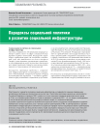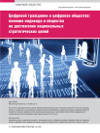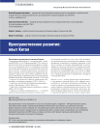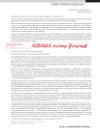Paradoxes of Social Policy in Developing Social Infrastructure
DOI: https://doi.org/10.33917/es-2.176.2021.38-44
The state’s responsibility for development of social infrastructure has not been questioned by modern Russian and foreign economists for many years. An indicator of implementing the national goals of the Russian Federation development for the period up to 2030 is not only an increase in life expectancy up to 78 years, but also a half reduction in the poverty level compared to indicator of 2017 [1], which points out the need not only to ensure additional income for the elderly, but also to reduce their costs. In the context of limited budgetary opportunities, the state’s social policy is focused on developing commercial sector of social services and the sector of socially oriented NPOs that are not interested in development of capital-intensive infrastructure component at social tariffs. Private stationary facilities are targeted at wealthy people and are inaccessible to most elderly people who have to turn to the gray services market. Excessive commercialization has embraced even state-owned infrastructures, created or reconstructed through the mechanism of public-private partnership. This results in limited availability of public good and competition for access to it.







